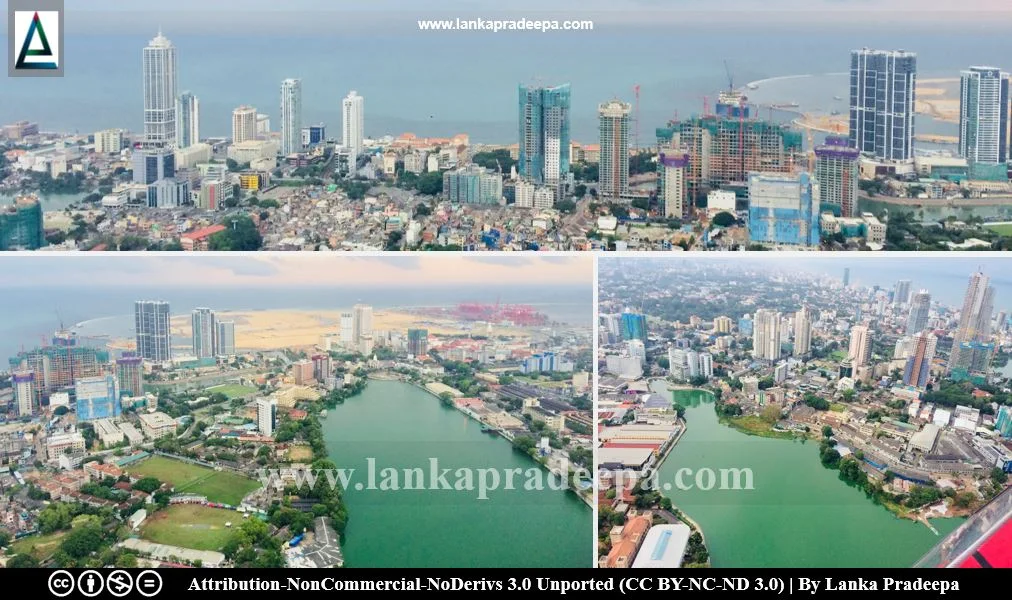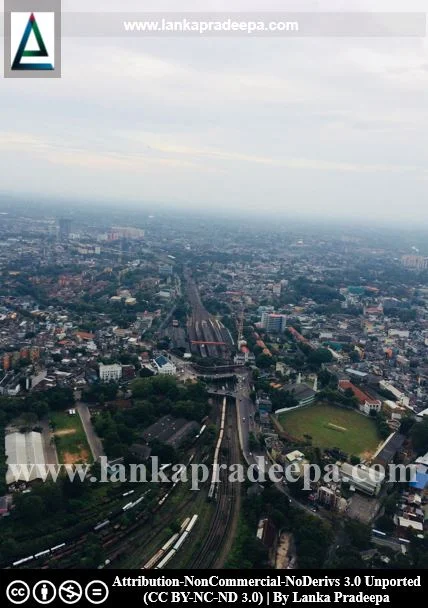
|
Colombo Lotus Tower |
Lotus Tower , also known as Nelum Kuluna (Sinhala: නෙළුම් කුළුණ; Tamil: தாமரைக் கோபுரம்), is a 350-meter (356 m: with the lightning conductor) high multi-functional iconic communication tower located at D.R. Wijewardana Mawatha, Colombo 10, Sri Lanka. It is considered one of the tallest towers in Asia.
Construction
The process to build a multi-functional tower in Colombo was initiated in 2008 by the Telecommunications Regulatory Commission of Sri Lanka and the Project Consultancy Unit, Faculty of Architecture, University of Moratuwa was appointed as the consultant to the project to support project formulation & implementation.
The project contract to build the Lotus Tower was signed in 2012, between the Sri Lanka Telecommunication Regulatory Commission (SLTRC), China National Electronics Import & Export Corporation (CEIEC), and Aerospace Long - March International Trade Corporation Limited (ALIT). The construction was commenced in the same year, at a total cost of $ 104.3 million. The project was mainly funded by the Export-Import (EXIM) Bank of the People’s Republic of China.
The tower was declared open on 16 September 2019, by the then Sri Lankan President Maithripala Sirisena (2015-2019). However, the tower was not opened to the public until 15 September 2022.
Structure
The design of the tower is inspired by the lotus flower, which has symbolic ties to Sri Lankan culture. The tower has four sections, viz: the base, the tower stem, the tower house, and the antenna mast (Nguyen et al., 2019). The tower base inspired by the lotus throne is formed by two inverted trapezoidal and comprised of four floors. The tower house is bud-shaped and consists of 9 levels starting at 215 m level and going up to the height of 260 m level. The petals of the bud are illuminated by LED lights with changeable colours. The steel antenna mast is approximately 88 m tall, extending from a level of approximately 262 m to 350 m above ground level (Mendis et al., 2018).
The tower house consists following sections.
- Transmission: Extending from 215m to 225m, the first & second levels of the tower house have been allocated for Radio and Television transmission. The first level is for radio transmission purposes and the second level is totally allocated for Television transmission.
- Banquet halls: The third & fourth levels (225m-235m) are reserved as banquet halls.
- Revolving restaurant: Located on the fifth level (235 m-240 m), the revolving deck takes approximately 90 minutes to complete one revolution.
- Lotus suite: The sixth level (240 m-245 m) has been reserved for a guest house comprising 6 guest rooms.
- Observation deck - The seventh level (245 m-250 m) is used as an observation deck.
Facilities
The tower is mainly used for the country's telecommunication purposes. Also, it houses a revolving restaurant, an observation deck, two banquet halls, and food courts.




Related Posts
Read Also
References
Journal Articles
1) Mendis, P., Fernando, S., Holmes, J.D., Gunawardena, T., Abu-Zidan, Y. and Dias, P., 2018. Wind-induced fatigue analysis of Lotus Tower Mast. 19th Australasian Wind Engineering Workshop, April 4-6, 2018, Torquay, Victoria.
2) Nguyen, K.T.Q., Mendis, P. and Fernando, S., 2019. Novel modelling approach for evacuation strategies of tall towers-A case study of Lotus Tower. Journal of Building Engineering, 25, pp.1-7.

